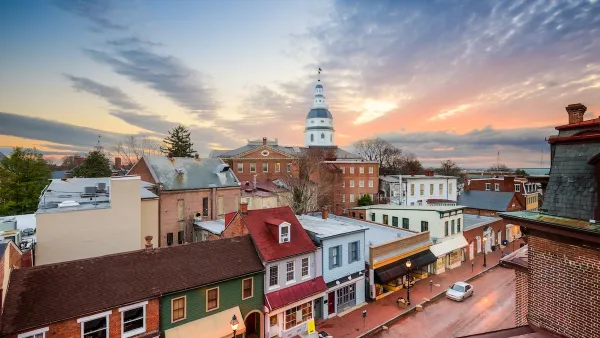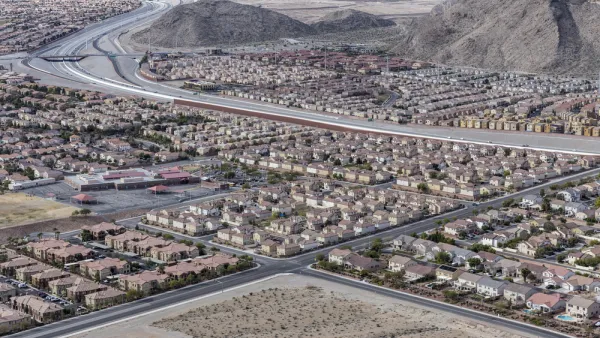In an opinion piece for The New York Times, Allison Arieff considers the next phase of the "American Dream," as the notion of trading in the ideal of the home as fortress for the home as part of a larger whole gains widespread traction.
The cultural mechanisms, regulations, and incentives that encouraged sprawl-based development for the latter half of the last century are so entwined with the myth of the "American Dream" that they've been hard to untangle, even as changing tastes, demographics, and economic realities have heralded their expiration.
But Arieff finds reason for optimism: "In short, builders are recognizing that buyers (and renters, too!) value the neighborhood as much as - if not more than - the house. And what they want from that neighborhood might not be McMansions and four-car garages after all. Resale value may not in fact trump all else. Young and old, whether they're in the city or the suburbs, want to walk to places like restaurants and shops."
"The country could be moving toward something much better, something that's less about consumption (of stuff, of such essential resources) and more about quality of life. Neighborhood groups have perhaps never been so strong a force, joining together to create an array of community-building offerings that make shared space the place to be (rather than the place to enter the garage from)."
But the forces of the status-quo, well-funded and well-organized, are digging in, and equating, "Any threat to the McMansion of yore...to 'feudal socialism.'"
Arieff concludes that, "Living better and smarter shouldn't be a partisan issue, nor should attempts at facilitating it be equated with destroying 'our fundamental rights and liberties as a people.'"
FULL STORY: The American Dream: Phase II

Analysis: Cybertruck Fatality Rate Far Exceeds That of Ford Pinto
The Tesla Cybertruck was recalled seven times last year.

National Parks Layoffs Will Cause Communities to Lose Billions
Thousands of essential park workers were laid off this week, just before the busy spring break season.

Retro-silient?: America’s First “Eco-burb,” The Woodlands Turns 50
A master-planned community north of Houston offers lessons on green infrastructure and resilient design, but falls short of its founder’s lofty affordability and walkability goals.

Test News Post 1
This is a summary

Analysis: Cybertruck Fatality Rate Far Exceeds That of Ford Pinto
The Tesla Cybertruck was recalled seven times last year.

Test News Headline 46
Test for the image on the front page.
Urban Design for Planners 1: Software Tools
This six-course series explores essential urban design concepts using open source software and equips planners with the tools they need to participate fully in the urban design process.
Planning for Universal Design
Learn the tools for implementing Universal Design in planning regulations.
EMC Planning Group, Inc.
Planetizen
Planetizen
Mpact (formerly Rail~Volution)
Great Falls Development Authority, Inc.
HUDs Office of Policy Development and Research
NYU Wagner Graduate School of Public Service



























